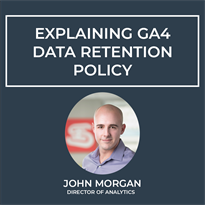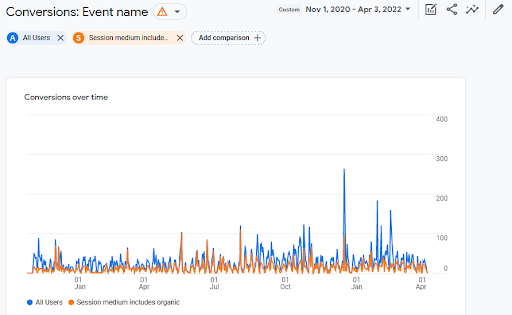Tap to call
877-885-9935
.png?sfvrsn=78fa407d_1&MaxWidth=240&MaxHeight=240&ScaleUp=false&Quality=High&Method=ResizeFitToAreaArguments&Signature=F7B3932C0EAB706492826C70C9437D2D0DFB3186)
17 min read
6/17/2022 9:14:11 PM
GA4: Why Your Web Analytics World Is About To Get Rocked And What You Can Do About It
Automate your marketing and grow your business today
Friday, April 8, 2022

If you’ve been confused about the data retention policy in Google Analytics 4 (GA4), you’re not alone. I took some time to dig through Google’s confusing support documentation to outline the real-world implications to help you figure out what needs to be done.
If you’ve been confused about the data retention policy in Google Analytics 4 (GA4), you’re not alone. I took some time to dig through Google’s confusing support documentation to outline the real-world implications to help you figure out what needs to be done.
If you’ve been following the GA news, or read my writeup on Universal Analytics vs GA4, you’ve probably come across the Data Retention Policy. Many have read about it, many have been confused - including myself.
To help, here are some GA4 data retention policy FAQs that we can address:
Will I be able to view more than 14 months of data in GA4?
The short answer is yes. However, there are some caveats. For example, if you intend to use the Explorations reporting feature in GA4, you will be limited to 14 months (or two, if you haven’t updated your data retention settings) of lookback.

The above example shows more than 14 months of data in a chart with aggregated data
What if I use a custom segment, and/or add a secondary dimension in an aggregated report?
Thankfully, you’ll still be able to view more than 14 months of data. At least in my testing I’ve been able to with no issue (see the example above). The same caveat applies about Explorations reports though.
Will I be able to view conversion data going back more than 14 months in an aggregated report?
Again - yes, thankfully. I’ve had no issues viewing conversions beyond 14 months (the screenshot above has a relevant example). And again - this does not hold true for Explorations reports. Only aggregated reports.
What do I do if I need the in-depth reporting from Explorations AND more than 14 months of data?
This is a valid concern since the default reporting in GA4 can be… well… limited in its capabilities. For more complex reporting needs, there are some good options.
First, you can try connecting directly to Google Data Studio to see if you can get what you require. The only reason I recommend this as a first approach is because of the ease and cost of connecting. Other than that, I haven’t had a lot of luck trying to wrangle complex reports using GA4 data directly in GDS.
The next step would be to connect your GA4 data to Google BigQuery. This is a significant step up in level of effort from the direct-to-Data-Studio method, so we recommend consulting with an expert.
I hope this has been a helpful resource to clear up possible confusion regarding GA4’s Data Retention settings. If you have any questions or would like to see how we can help you ensure consistent, accurate data collection and reporting, don’t hesitate to get in touch!
What does the GA4 Data Retention Policy really mean?
GA Solutions